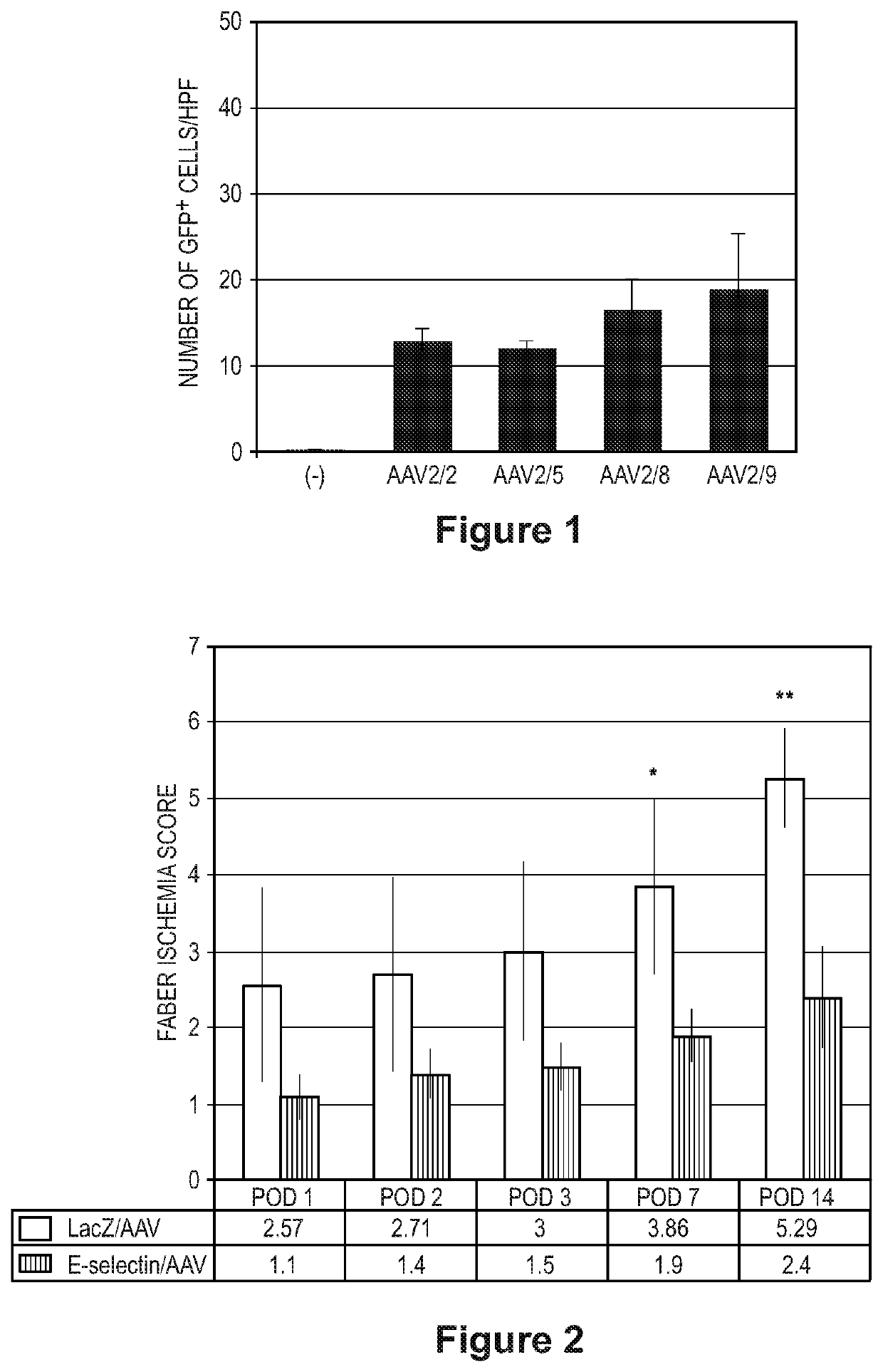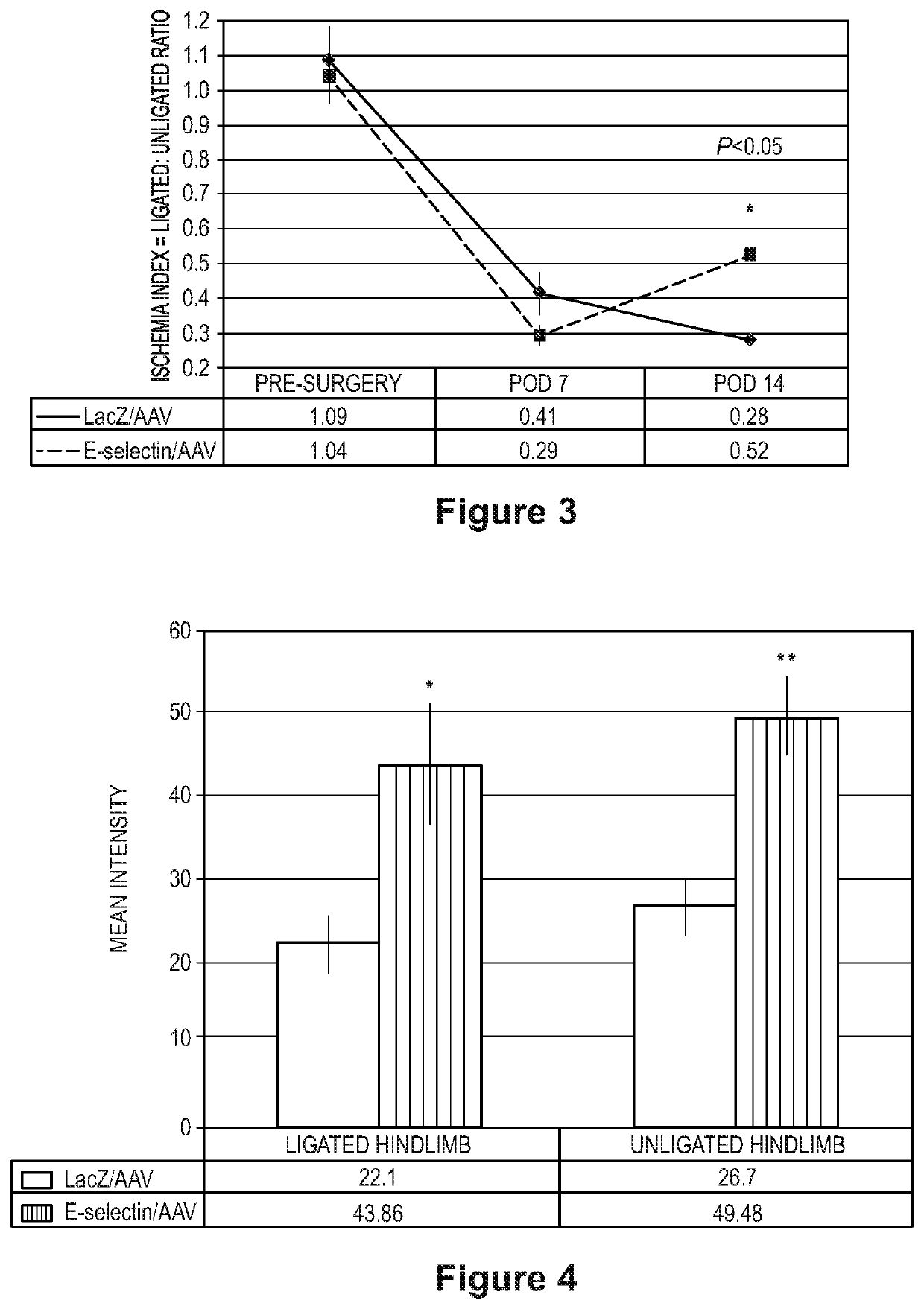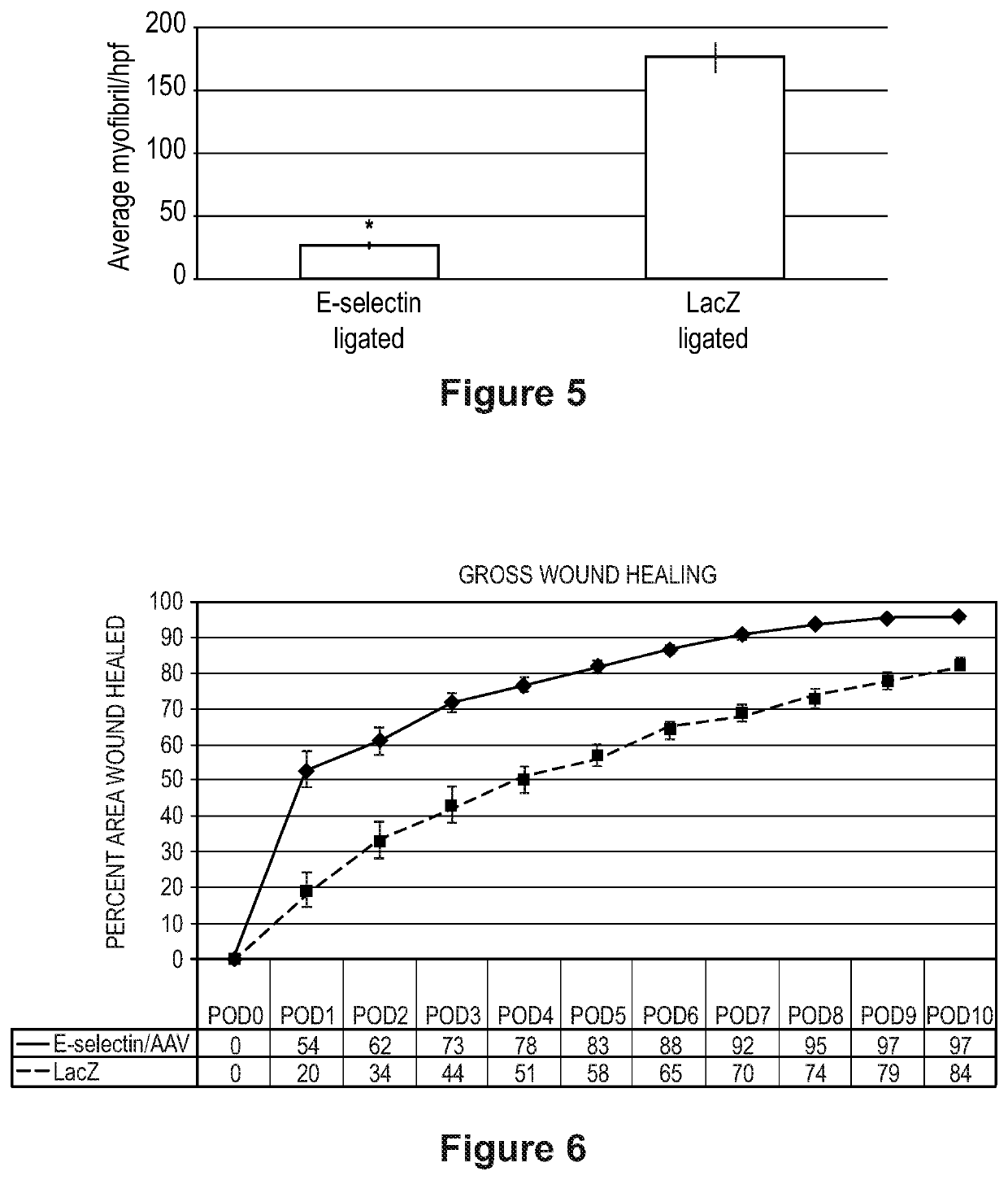Method for Treating Ischemic Tissue
a technology for ischemic tissue and materials, applied in the field of materials and methods for treating ischemic tissue, can solve the problems of difficult blood flow through the arteries, severe pain, skin ulcers, gangrene, etc., and achieve the effect of increasing blood flow or perfusion
- Summary
- Abstract
- Description
- Claims
- Application Information
AI Technical Summary
Benefits of technology
Problems solved by technology
Method used
Image
Examples
example 1
[0078]Impaired blood flow to the limb and soft tissue, which is normally through both macrovascular (arteries) and microvascular (capillaries) processes, is a central common etiology in patients suffering with PAD and CLI. The restoration of sufficient blood flow to ischemic tissue allows a successful repair response. Therapeutic angiogenesis refers to the use of drugs, genes, cells or mechanical devices to induce blood vessel formation in ischemic tissue. The primary benefit is inducing the growth of new blood vessels and promoting collateral vessel formation to increase blood flow to blood starved tissues. Angiogenesis can ultimately lead to a reduction in the risk of adverse cardiovascular events, relieve ischemic pain, heal ulcers, prevent major amputation, and improve quality of life and survival in CLI patients, particularly those who do not qualify for surgical intervention.
[0079]Adhesion molecules on the cell surface mediate cell-cell interaction and homing. Adhesion recepto...
example 2
[0090]This Example describes delivery of a novel stem cell-therapy in the context of the method. In one aspect, engineered BM-derived tissue repair cells (TRC) are administered, wherein E-selectin is pre-installed on the cell surface. These engineered TRC administered in ischemic limb tissue can selectively adhere and interact with activated endothelial cells (EC) (which express elevated counterpart ligands that attract and interact with E-selectin) in ischemic tissue vasculature, especially cells at the budding tip shuffling in sprouting angiogenesis, to promote new blood vessel formation. Alternatively, a supportive tissue microenvironment is generated by priming EC in wound vasculature and tissue cells with E-selectin using a viral vector. E-selectin serves as docking site for either endogenous or exogenous TRC (which express ligand of E-selectin) to anchor, by which to increase precision interaction / homing of TRC to ischemic tissue.
[0091]Intramuscular Injection of Autologous Tis...
example 3
[0127]The lack of a reliable animal hindlimb gangrene model limits molecular investigation and pre-clinical treatment of critical limb ischemia. This example describes the development and use of a mouse hindlimb gangrene model for assessing the efficacy of gene therapy.
[0128]It was hypothesized that priming ischemic hindlimb tissue with E-selectin / adenoassociated virus (AAV) would enhance therapeutic angiogenesis and attenuate gangrene.
[0129]Two methods to induce hindlimb gangrene were tested. In a first method, FVB mice underwent femoral artery ligation (FAL) to achieve critical limb ischemia. In a second method, FVB mice underwent combined FAL and administration of NG-nitro-L-arginine methyl ester (L-NAME), a nitric oxide synthase inhibitor, which further reduces hindlimb perfusion. Prior to FAL and L-NAME use, gangrene-induced mice were intramuscularly administered E-selectin / AAV (treatment) or LacZ / AAV (control) to the hindlimb. Gangrene was assessed using a standardized ischemi...
PUM
| Property | Measurement | Unit |
|---|---|---|
| Flow rate | aaaaa | aaaaa |
Abstract
Description
Claims
Application Information
 Login to view more
Login to view more - R&D Engineer
- R&D Manager
- IP Professional
- Industry Leading Data Capabilities
- Powerful AI technology
- Patent DNA Extraction
Browse by: Latest US Patents, China's latest patents, Technical Efficacy Thesaurus, Application Domain, Technology Topic.
© 2024 PatSnap. All rights reserved.Legal|Privacy policy|Modern Slavery Act Transparency Statement|Sitemap



